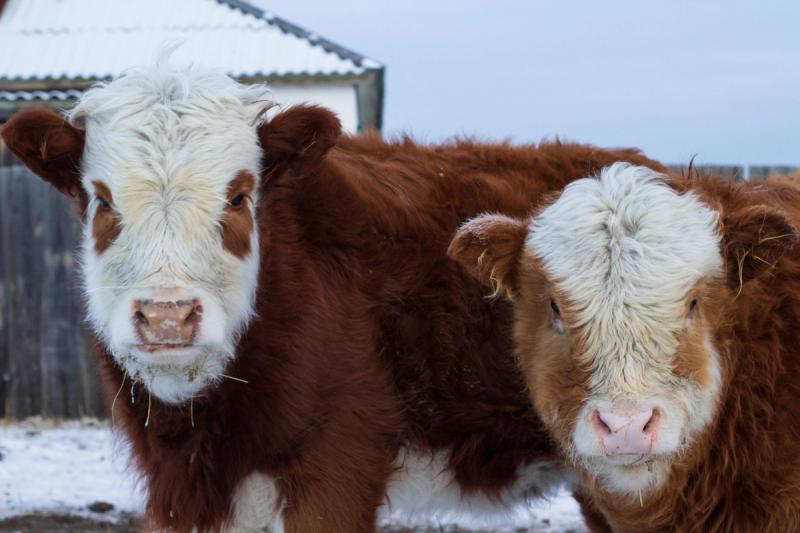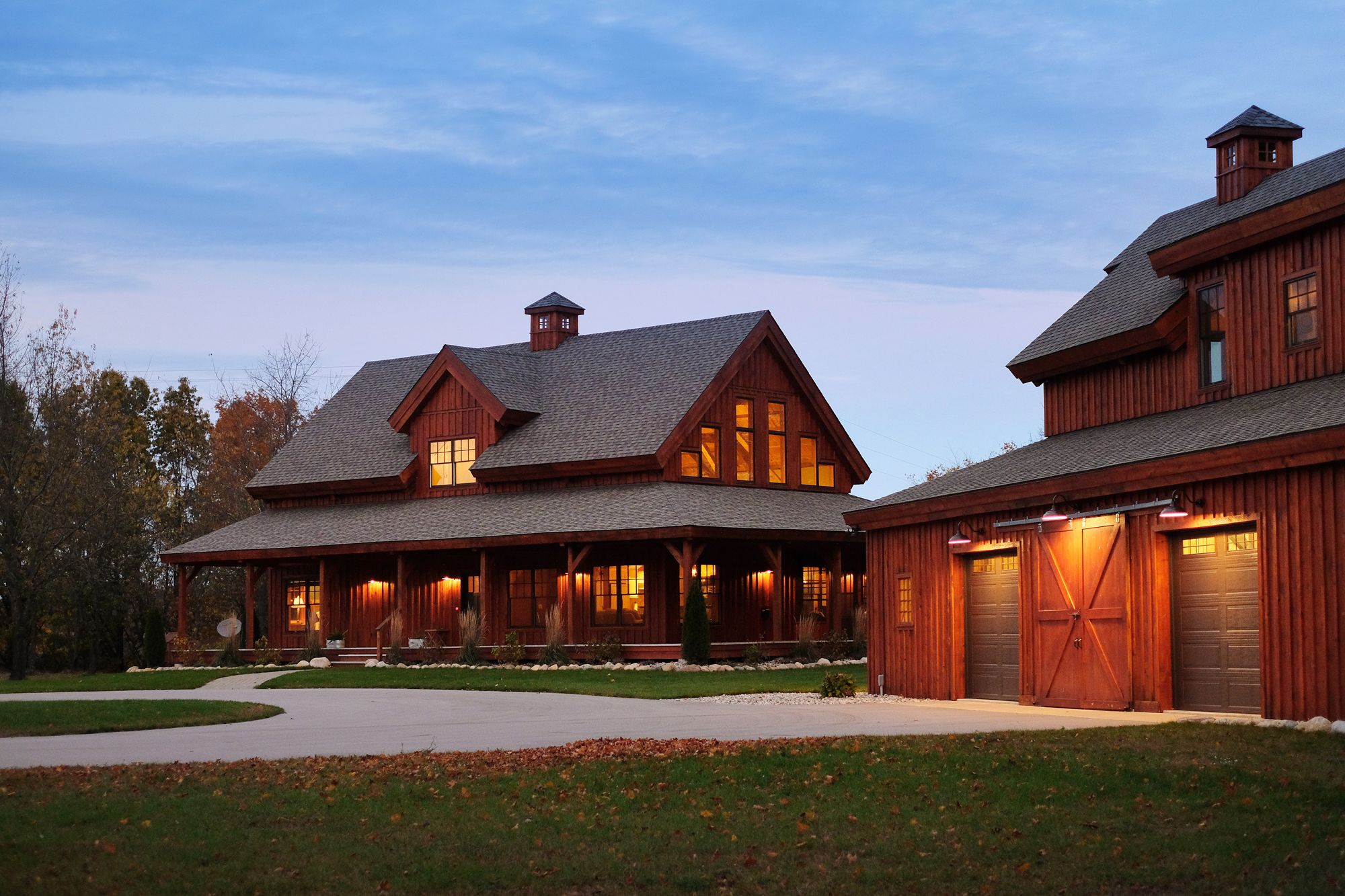Prepare for the Chill
Advice on Staying Safe During Harsh Winter Weather


For Lee and Mary Woita, the bloggers behind Boots & Hooves Homestead, ranch life never slows down, especially during the harsh North-Central Nebraska winters.
During extreme cold conditions, the couple stresses the importance of preparing and planning ahead of time. This helps them effectively manage the daily chores and responsibilities that the ranch demands.
From physical to mental preparations, the Woitas share their best advice for surviving Mother Nature at her worst.
Physical Winter Preparation
Before winter arrives, the Woitas perform several routine tasks to prepare. These include insulating animal structures, routine maintenance on ranch equipment, stocking up the pantry and ensuring all family members have essential winter clothing.
They recommend doing the following:
Prepare Animal Structures
Ensure that animal homes and buildings are insulated for warmth and ventilated to prevent moisture build-up. Stock up on and provide bedding such as hay and straw. Check that the waterers are full and not frozen.

Cattle and Livestock
Move animals closer to their structures, especially when a winter storm is approaching. Ensure they have proper windbreaks or a place for escaping the elements. Plan on using extra hay for bedding.
Equipment
Perform regular maintenance checks on tractors, all-terrain vehicles and other large acreage or farmland equipment. Keep them free of moisture and extreme cold, which can cause irreparable damage.
Lee stressed the importance of using the correct strength anti-freeze in a tractor and switching up diesel fuel.
“This keeps your equipment running during extreme temperatures,” he said. “When the weather changes, switch to no.1 diesel fuel and don’t forget to check oil levels on all equipment.”
The Farmhouse
Use hay bales to insulate and protect the well from freezing temperatures. Build a wall of bales around the well to prevent someone from running it over with a tractor when the snow gets deep.
“Hay bales also make great windbreaks,” Mary added.
More extreme cold weather preparation ideas include:
- Add plastic, or other covers, to home windows to prevent cold drafts.
- Use energy-efficient drapes.
- Add weather stripping around all exterior doors.
- Wrap all exterior pipes with insulation.
- Chop and split wood for the wood stove.
- Fill up the propane tank.
“We’ve also had to add a heat lamp to our well house during frigid winter days, which has helped prevent freezing,” she said.
Stock Up
Plan to stock up on emergency supplies should a snowstorm trap you in your home for an extended period.
- Some items include:
- Extra food and water.
- Batteries and flashlights.
- Extra blankets or sleeping bags.
- Cold weather gear like gloves, hats, socks and boots.
- Gas and oil for cars, ATVs, tractors and even a generator.
For farmers with animals, stock up on farm supplies, animal feed, hay and extra water.
Protect Water Pipes
If the temperatures are expected to be extremely low and below freezing, consider taking extra precautions.
Open all under-the-sink cabinets. The interior warmth from the home will help keep water pipes from freezing. Turn on the faucets, leaving them to drip.
“We usually do this overnight or on days when the temps fall well below zero,” Mary said.
And lastly, wrap all exposed exterior pipes with insulation.
Cold Weather Clothing and Gear
Wearing the right clothing and winter gear is critical to protecting the body from cold-related health issues like frostbite and hypothermia.
For proper protection, Mary recommends dressing in layers, including:
- Merino wool base layers – wool, or other natural fibers, help retain heat better than synthetic fabrics.
- Layers that can be removed as the weather warms during the day. Mary recommends a hoodie and a Carhartt coat.
- Snow pants or coveralls.
- High-quality wool socks.
- Insulated muck boots.
- Warm, fluffy hat or a wool hat with ear flaps.
- Wild rags to wrap around and protect the neck.
- Thick, insulated work gloves.
- A warm face mask.
The Woitas stock up early on winter-related clothing to prepare for the extreme cold.
“Shop end-of-season sales for the following year,” she explained. “Lee even stops shaving and grows a nice winter beard, which helps keep his face warm during the coldest months."
Mental Winter Preparation
Physical preparation is important, but mental preparation is equally crucial.
In the morning, take time to ease into the workday.
“Farmers and ranchers don’t get snow days,” Mary said. “So, taking it a little slower to enjoy an extra cup of coffee before heading out can go a long way for mental health. Plus, knowing that we have animals that rely on us helps keep us motivated.”
For those struggling with the physiological toll of repetitive, harsh winter work, Mary suggests they:
- Take regular breaks.
- Go inside to warm up.
- Stay connected with friends and family.
- Grab a snack or drink a warm beverage. Woita suggests beef sticks, jerky, granola, seeds, nuts and energy bars.
- Stay hydrated.
- Avoid consuming too much caffeine and alcohol.
- Exercise and practice mindfulness.
When times get tough, Lee tries to keep things in perspective.
“I try to remember that there’s someone out there who is dealing with harsher conditions. We live about 20 miles from the closest town. We have friends that live even further from town; at least an hour or more. Knowing that others have it harder than us really makes you stop and think.”
For her mental health, Mary enjoys reading through the Little House on the Prairie book series with her family.
“Reading ‘The Long Winter’ is eye-opening, knowing that some folks endured extreme conditions. It keeps us grateful.”
Cold Weather Lessons
“Coming from the city, I didn’t know much about what was needed for survival during the winters on a rural property,” Mary shared. “Simple tasks like keeping the home stocked up, the propane tank filled and keeping the animals healthy and happy – these all became routine habits.”
Lee said learning resiliency and adapting to winter in a rural setting takes time.
“Over time, experiences like extreme blizzards, long winters and power outages become easier to manage. It’s important to be prepared before the weather hits. Have a plan, do a large grocery haul and the winter weather will be much easier to manage.”
Tags:Country Living

Acreage Life is part of the Catalyst Communications Network publication family.















